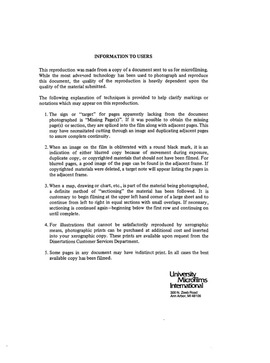| dc.contributor.author | Inamete, Ufot Bassey, | en_US |
| dc.date.accessioned | 2013-08-16T12:29:21Z | |
| dc.date.available | 2013-08-16T12:29:21Z | |
| dc.date.issued | 1985 | en_US |
| dc.identifier.uri | https://hdl.handle.net/11244/5332 | |
| dc.description.abstract | It is with this conceptual scheme of nonalignment, that this study developed, that the nonalignment content in the Nigerian foreign study also developed another novel way of studying the phenomenon of nonalignment; which is that of evaluating how, or whether, it is manifested, in terms of conceptualizing nonalignment as an amalgam of perspectives and dimensions. | en_US |
| dc.description.abstract | The beginning of the study successfully handled the need to comprehensively rein in the conceptual profile of nonalignment; and, thus, this study developed a nonalignment conceptual scheme of an amalgam of perspectives and dimensions. | en_US |
| dc.description.abstract | This study examined the concept of nonalignment in relation to the Nigerian foreign policy. Specifically, it aimed at examining whether, and why, the Nigerian foreign policy manifested the phenomenon of nonalignment, or failed to do so, during the period spanning from 1960 - 1983. | en_US |
| dc.description.abstract | On the main issue of the nonalignment content in the Nigerian foreign policy, this study found that, during different political eras in Nigeria, different mixes of factors were at work. Namely, during the First Republic, the factors of a government made up of a coalition of moderates, and the significant role of assertive radical elements in the fringes of the governmental structure, and as pressure groups, resulted in Nigeria being able to be nonaligned. The succeeding Ironsi government, due to its very brief, and crisis-ridden, duration, was also found to manifest nonalignment phenomenon in the same way as did the First Republic. The Gowon government that followed, however, due to the realities of the Civil War, and the existence of a cautious government, was able to exhibit a nonaligned posture that, despite warm relations with the East, was still firmly adequate. The assertive national leadership during the Muhammed/Obasanjo government meant also an assertive nonaligned posture, while the Second Republic nonalignment phenomenon was, more or less, a replication of the First Republic dynamics and posture. | en_US |
| dc.description.abstract | Additionally, although the nonaligned content of the Nigerian foreign policy varied with different political eras, all of the eras (especially the last three) were found to have manifested a mostly Afro-centric conceptual perspective, and foreign policy mechanism dimension of nonalignment. | en_US |
| dc.format.extent | xi, 327 leaves ; | en_US |
| dc.publisher | The University of Oklahoma. | en_US |
| dc.subject | Nigeria Politics and government 1960-1975. | en_US |
| dc.subject | Political Science, International Law and Relations. | en_US |
| dc.subject | Nigeria Politics and government 1975- | en_US |
| dc.title | The concept of nonalignment and the Nigerian foreign policy 1960-1983 / | en_US |
| dc.type | Thesis | en_US |
| dc.thesis.degree | Ph.D. | en_US |
| dc.note | Source: Dissertation Abstracts International, Volume: 46-06, Section: A, page: 1730. | en_US |
| ou.identifier | (UMI)AAI8518305 | en_US |
| ou.group | College of Arts and Sciences::Department of Political Science | |
